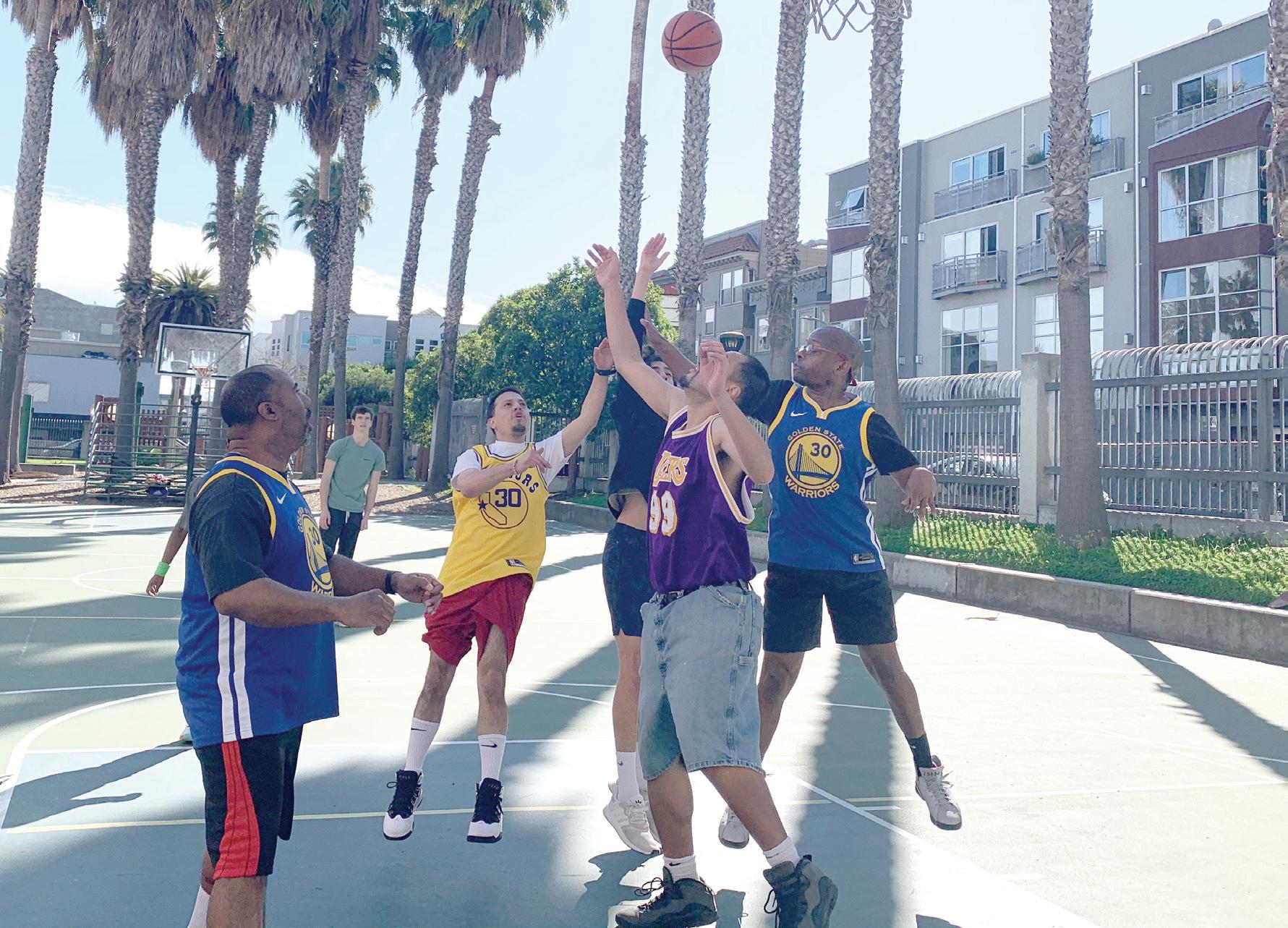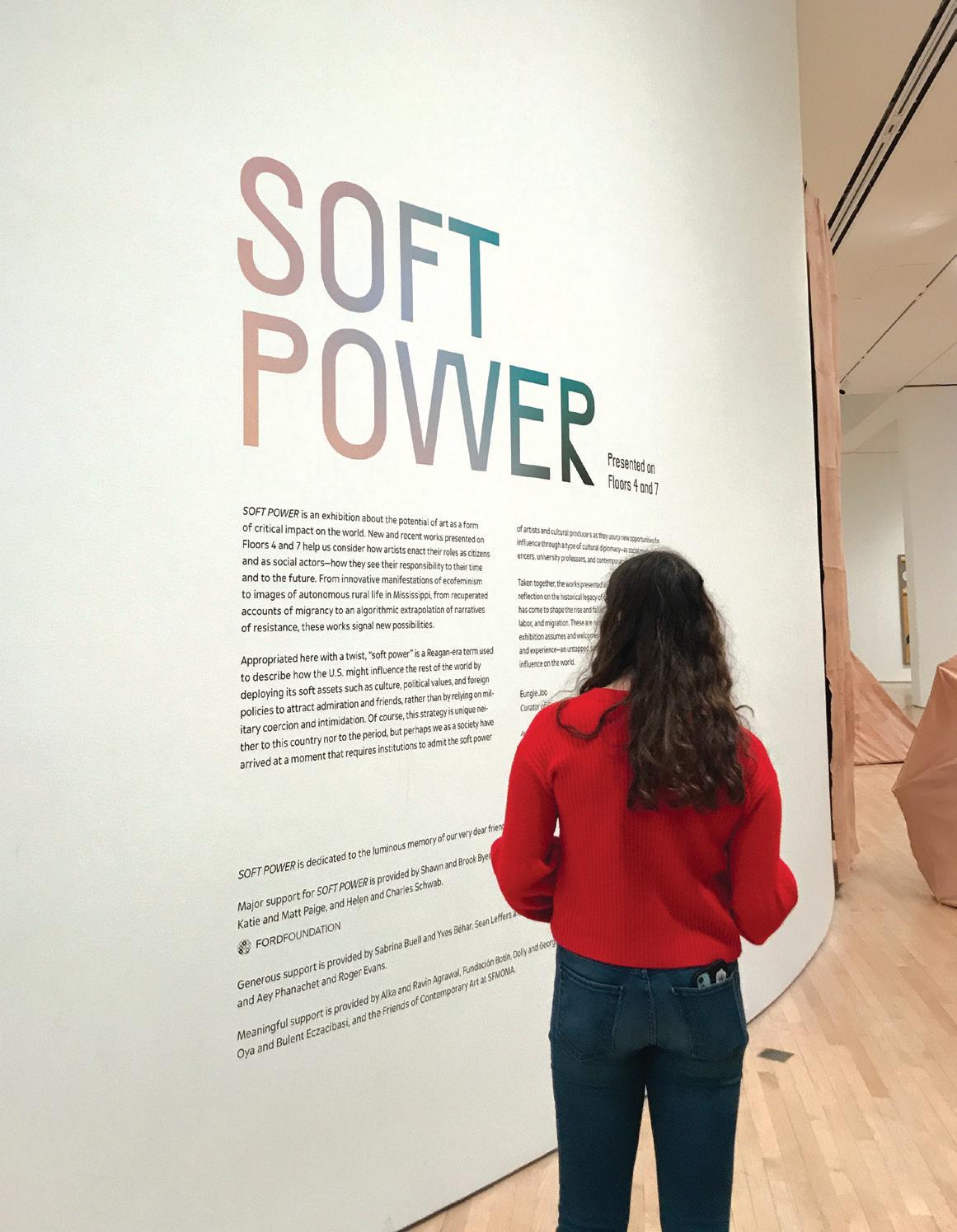
5 minute read
athletic
Volunteers help disabled athletes Service organization provides athletic training, competition
Adele Fratesi
Advertisement
Reporter A lthough the world-wide games only take place every two years, the Special Olympics have ongoing events in the Bay Area year-round.
“The organization creates an opportunity for p e o p l e that otherwise would not have that opportunity to get out run, play, and move their body,” volunteer Frank Moslander said. “You need a place where the playing field is level, and athletes are of comparable caliber.”
The Special Olympics organization was created in Eunice Kennedy Shriver’s backyard with the founding of Camp Shriver in the early 1960s. The Moslander
camp was an instant success and it served as a safe place for children with special needs to be active among peers with and without disabilities. Eventually the event grew into the worldwide Special Olympics movement.
“It is an organization heavily geared toward inclusion,” Special Olympics Sports Manager Jasmine Brown said. “We want to offer life long skills that will boost confidence and allow our athletes to feel like they belong in a group.”
Volunteers can serve for just one day at a local competition or throughout an eight to 10- week period becoming a coach in a specific sport, depending on their time commitment, ability, and certification.
“My whole family volunteers together once a week throughout varying sports seasons in the year,” Moslander said. “I am a registered volunteer and my daughter is a certified coach for track and field.”
Beginning on a regional level, gold medal winners are placed in the allotment to participate in the Summer Games and a small percentage of winners from this competition advance to the World Games, according to Brown.
“Convent has participated in Special Olympics events in the past,” sophomore Amelia Abernethy said. “At the beginning of the year, SIA worked at a Special Olympics event passing out water and helping athletes.”
Students wanting to get involved with Special Olympics can sign up for the Polar Plunge 5k or 10k on Feb. 29 held in Aquatic Park. The College of Marin Kentfield is also hosting an event on May 26 volunteers.
“Athletes and volunteers alike learn life skills, courage and determination through the work we do,” Brown said. “We teach lessons that pertain to sports and beyond.” Mackenna Moslander | THE BROADVIEW SHOOTING HOOPS Special Olympics athletes play basketball with student volunteers. Sports seasons change throughout the year and include more than 30 sports such as swimming, basketball and skiing.
Exhibit challenges injustice

Sneaking into style What’s pumping in the City White sneakers add brightness to any outfit Alina Kushner Senior Reporter P hotographs of immigrating families, abstract paintings and films by global artists make up “SOFT POWER,” a new exhibition at the San Francisco Museum of Modern Art.
While power typically influences and affects one’s actions, soft power is the more narrowed ideology that cultural aspects can influence an individual’s choices, and hard power is when authorities overpower individuals with physical forces or by threats, according to Global Politics teacher Michael Stafford, who accompanied a number of junior and senior students to the exhibit on an after-school outing.
“I thought it was interesting being able to see the concepts from Global Politics in effect in art, especially how the art coincided with politics and the world,” junior Audrey Scott said. “It was interesting to see the Soft Power exhibit depicting the global person versus the self.”
The exhibition features a variety of pieces from 20 different artists originating from 12 different countries. The focus of the artworks vary, ranging from depicting ancient Rome to modern encyclopedias, but all share the concept of soft power through cultural influences on individuals.
“These artists are all old enough to understand history as a linear process,” museum guide Avril Angevine said. “It helps show that things that happened in the past affect what’s happening now, and things that are happening now are sources of the past.”
The exhibition is meant to influence and inspire viewers to recognize certain aspects of culture and individuality that are sometimes overlooked in the global society, according to Angevine.
“They had everything from films, to paintings, to photography, to music — and all throughout the exhibit there were tons of different ways that people were expressing themselves,” Stafford said. “The fact that were there and the artists are influencing us and making us think about other parts of the world or other parts of the country or the experiences of other people is an aspect of soft power.”
The artworks touch on modern day politics, injustices and positive influences and were done in a variety of mediums, including photography, sculptures, glass work and films. The artwork also comments on an individuals’ global presence, which relates to the students in the International Baccalaureate Global Politics class, according to Scott.
“I think the timing of the exhibition is significant because it’s talking about global issues that are going on today,” Scott said. “They are talking about things happening at refugee camps and things happening just generally in life and how it affects people.”
The exhibition is on the fourth and seventh floors of SFMoMA and runs through Feb. 17, with free tickets for anyone under age 18. The museum is accessible by the 3 Muni bus, with a stop located three blocks from the museum.
“I really enjoyed this one piece in the exhibit depicting papers from a book about missing people and missing things,” Scott said. “I think it relates to the idea of the masses versus individuals and how people are treated.” Nisrine Rahmaoui | WITH PERMISSION POWER UP Senior Estie Seligman reads the Soft Power exhibit description at the San Francisco Museum of Modern Art. The Soft Power exhibit touches on politics and injustices through photographs, films, and abstract painting. Pulse
Closed toed, white sneakers are popular as practical everyday shoes for students. The shoes align with dress code and the white color provides a neutral but bright addition to every outfit.
Styles vary from high top to low, and from laced to slip on, and some white sneakers are even used as blank canvases for students to design patterns themselves. With the spring season rolling around the time for cute, active shoes is perfect. The shoes are a sensible and stylish option for every day in the city. — Mackenna Moslander


